Soldiers and Sailors Memorial Hall
Introduction
Text-to-speech Audio
Images
The Soldiers and Sailors Memorial Hall
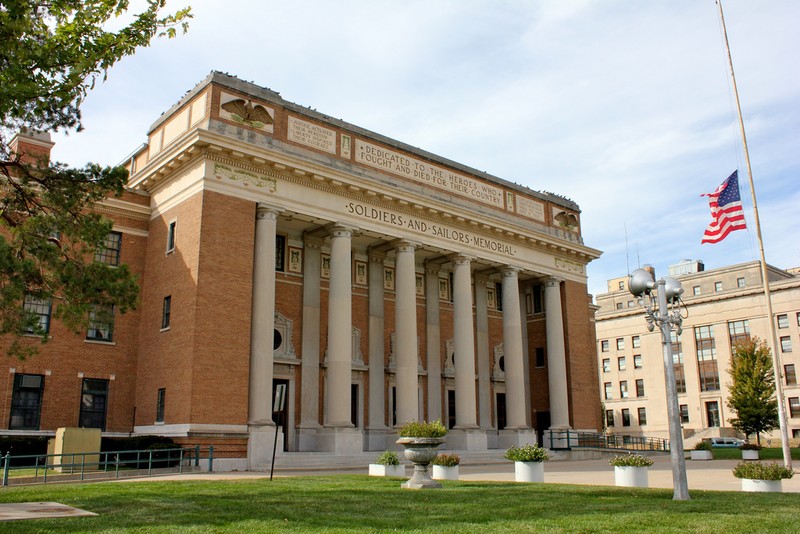
Detail of the parapet

Inside the main lobby
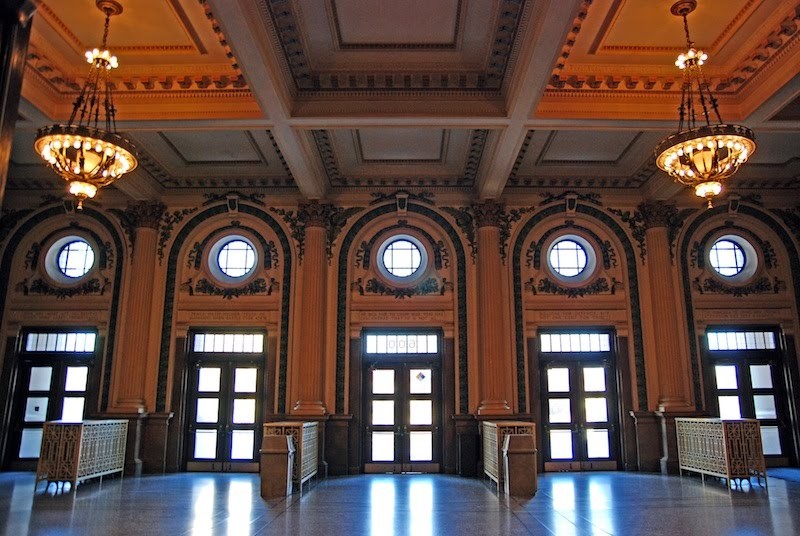
Inside the auditorium
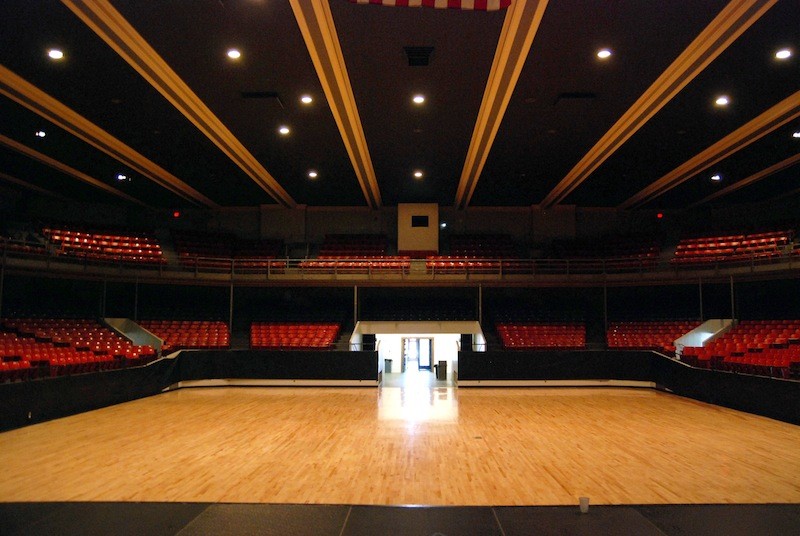
Another view of the Memorial Hall
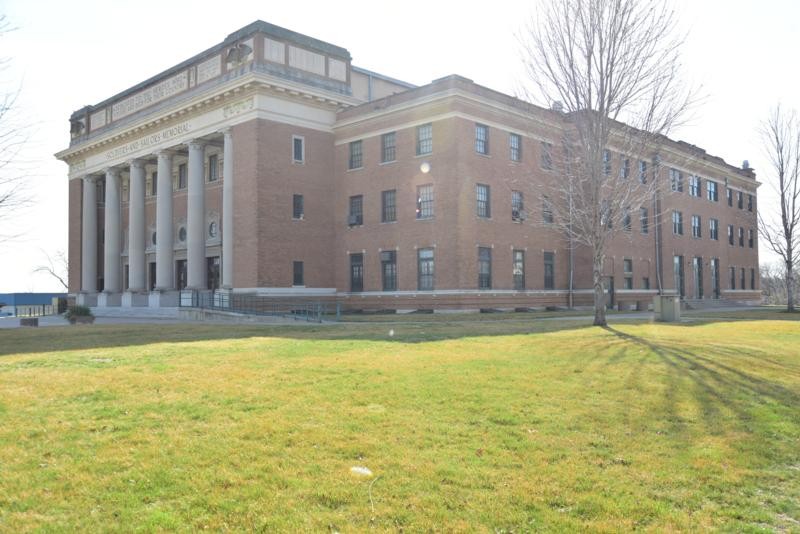
View of the back of the Memorial Hall
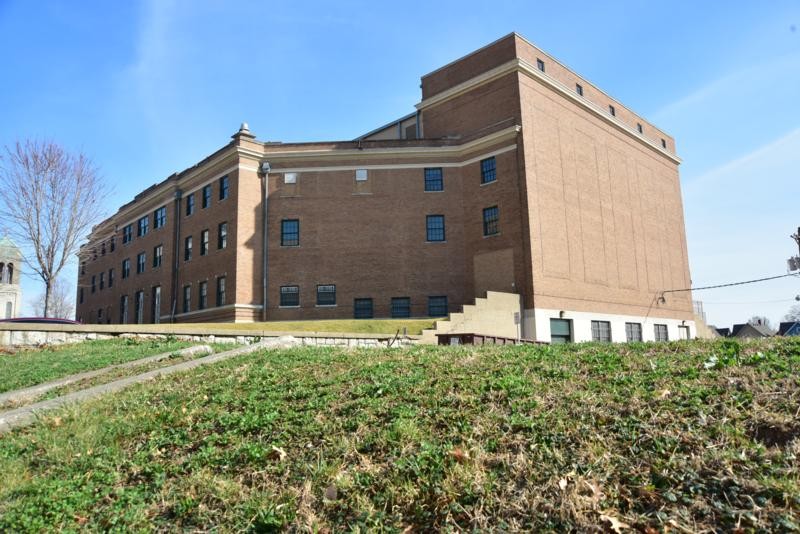
Backstory and Context
Text-to-speech Audio
A few years after the conclusion of WWI in 1918, the Kansas State Legislature had allowed for public funds to be used for the construction of Memorial Halls. A petition led by Harry Darby and other veterans collected signatures. In 1921, $500,000 was allotted by the Kansas City Board of Commissioners for the construction of the memorial. The architectural firm Rose & Peterson was chosen to design the Soldiers and Sailors Memorial Hall. Architects William Warren Rose (1864-1931) and David Burton Peterson (1875–1937) formed a partnership in Kansas City, Kansas in 1909. Rose had been the Board of Education architect since 1889, and he also briefly served as Kansas City Mayor from 1905 to 1906. Rose & Peterson would design over 60 projects around the city in the 16 years that they were partners, the Memorial Hall being one of their most notable accomplishments.
An elaborate groundbreaking ceremony and parade was held on May 14, 1923, and the Soldiers and Sailors Memorial Hall was completed in 1925. It is constructed in a Classical Revival and Georgian design. It is three-stories high, and the exterior is covered in brick with terra cotta and limestone trim. Six stone columns dominate the façade. The parapet has inscriptions flaked by two eagles. Steps lead up to five entrance doors, with portico windows above. The grand main lobby is two-stories high and features two large bronze chandeliers, decorative plasterwork, columns, and arches. The walls of the hall are etched with patriotic quotes and plaques listing the names of military men and women who lost their lives in battle. The hall’s auditorium seats 1,000 on the ground floor and 2,500 on the surrounding seats and balcony. The third floor has a chapel/reception area for 500. The final cost of the construction was over the initial budget at $542,476.
In 1922, Kansas City delegates to the national conference for the Veterans of Foreign Wars (VFW) offered the Memorial Hall as headquarters for the VFW offices. Rose & Peterson had not even completed their design for the hall, and construction had yet to begin. Nevertheless, the offer was accepted, and in 1923, the VFW moved their headquarters from New York City to Kansas City, Kansas, renting office space until the Memorial Hall was completed. For several years, the VFW was allowed to rent the Memorial Hall space for $1 per year and was supplied with free utilities. This was unacceptable to Harry Darby and others who had worked toward the construction of the hall. They filed a court case in protest, which went all the way to the Kansas State Supreme Court. In 1927, the court decided the city had no right to lease the property to a private corporation without proper compensation. The VFW moved out of the building that year to Kansas City, Missouri, where it is still headquartered today.
Memorial Hall has held countless concerts over its nearly 100-year lifespan. Most notably, it was the last venue where country music star Patsy Cline ever performed, on March 3, 1963, a few days before her tragic death in a plane crash. Between 1969 and 1979, The Grateful Dead played eight shows at the venue. Memorial Hall was also a popular venue for weekly wrestling events throughout the 1970s. In 1985, the Kansas City landmark was added to the National Register of Historic Places.
Cite This Entry
Trowbridge, David J. and Clio Admin. "Soldiers and Sailors Memorial Hall." Clio: Your Guide to History. November 1, 2020. Accessed March 20, 2025. https://theclio.com/tour/991/4
Sources
1. Cawthon, Richard J. “National Register of Historic Places Registration Form: Soldiers and Sailors Memorial Hall.” Kansas State Historical Society Website. Form prepared June 24, 1985. Accessed October 25, 2019. https://khri.kansasgis.org/index.cfm?in=209-2820-00013.
2. Millstein, Cydney. Westheight Manor Historic Inventory – Phase 3 Survey. Kansas City, Kansas: The City of Kansas City, Kansas, 1990. Accessed October 20, 2019. https://www.historicwestheight.org/history-app-5.html.
Kansas City Convention & Visitors Bureau: https://www.visitkansascityks.com/listing/memorial-hall/233/
https://www.waymarking.com/waymarks/WMW81R_Memorial_Hall_Eagle_Kansas_City_Kansas
Kansas Office of Tourism & Travel: https://www.travelks.com/listing/memorial-hall/26448/
http://darrendanger.blogspot.com/2010/08/memorial-hall-kansas-city-kansas.html
Brad Finch: https://khri.kansasgis.org/index.cfm?in=209-2820-00013
Brad Finch: https://khri.kansasgis.org/index.cfm?in=209-2820-00013

